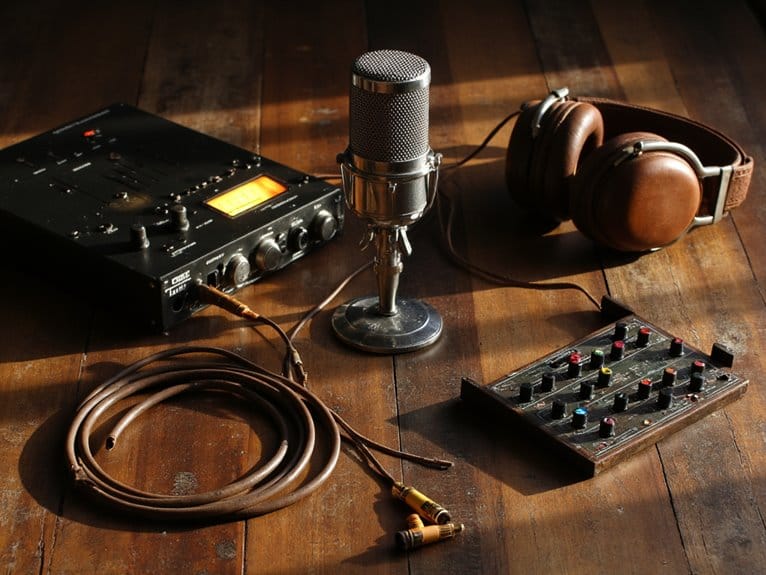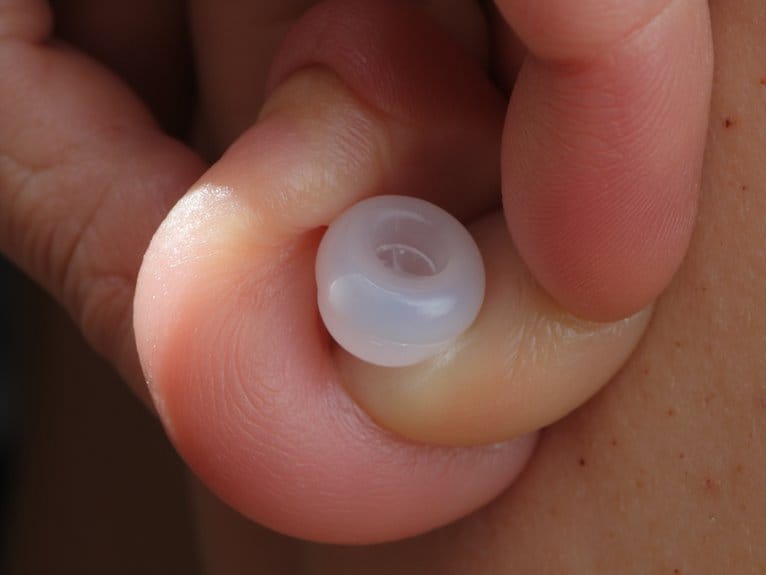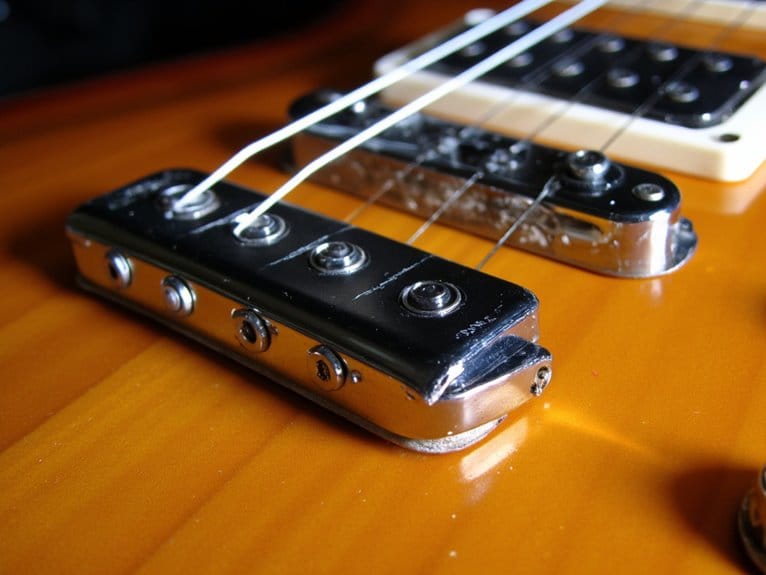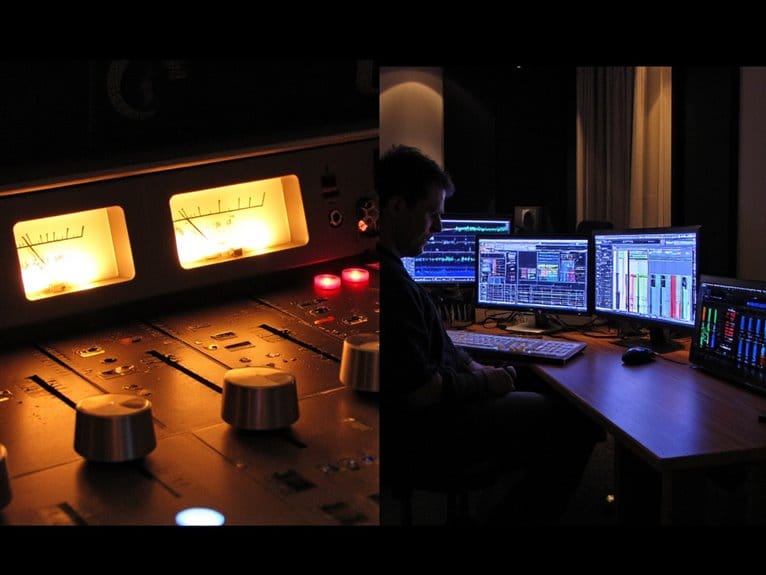Used Recording Equipment: Buyer’s Guide
When you’re shopping for used recording equipment, you’ll save 30-70% but need to verify serial numbers, test all functions against manufacturer specs, and check impedance compatibility with your setup. Focus on flagship models like Audio-Technica condensers or Focusrite interfaces for better resale value, compare prices across platforms, and insist on detailed usage history from sellers with verified ratings. Understanding these fundamentals will help you navigate the technical specifications and warranty considerations that separate smart investments from expensive regrets.
We are supported by our audience. When you purchase through links on our site, we may earn an affiliate commission, at no extra cost for you. Learn more.
Notable Insights
- Verify equipment authenticity through serial number checks and thorough visual inspection for damage or wear.
- Test all functions against manufacturer specifications and ensure compatibility with your recording setup’s impedance requirements.
- Research warranty transferability and return policies, typically ranging from 30-90 days for defect coverage.
- Compare prices across multiple platforms and factor in potential repair costs when budgeting purchases.
- Choose reputable sellers with verified ratings and demand transparency about usage history and equipment condition.
Essential Equipment Types and Market Categories
While browsing through countless listings of used recording gear can feel overwhelming, I’ve learned that understanding the five core equipment categories will save you both money and frustration in building your home studio.
Microphone types include dynamic models for loud instruments, sensitive condensers for vocals, smooth ribbon mics for vintage tones, and convenient USB options for beginners.
Dynamic mics handle high volumes, condensers capture vocal detail, ribbons provide warmth, and USB mics offer plug-and-play simplicity for newcomers.
Headphone categories split between closed-back designs that prevent sound leakage during recording and open-back models offering natural soundstage for mixing decisions.
Audio interfaces serve as your signal hub, converting analog to digital while providing essential preamps, and studio monitors deliver accurate playback through active or passive designs. Modern wireless lavalier microphones offer studio-grade audio quality at 48kHz/24-bit specifications, making them valuable alternatives for mobile recording setups.
Finally, acoustic treatment accessories like panels, pop filters, and shock mounts optimize your recording environment.
Dynamic microphones are particularly valuable for podcasting because they excel at background noise rejection, making them ideal for untreated rooms where acoustic control may be limited.
Evaluating Condition and Authenticity Before Purchase
Once you’ve identified the specific equipment categories that fit your studio needs, the real detective work begins when examining individual pieces for condition and authenticity, since counterfeit gear and undisclosed damage can turn what seems like a great deal into an expensive mistake.
Start with thorough documentation analysis, verifying serial numbers against manufacturer records while checking warranty status and purchase history for consistency.
Your condition verification process should include detailed visual inspection using magnification to spot micro-cracks, corrosion, or structural damage that impacts reliability.
Test every button, switch, and control while measuring key performance metrics against manufacturer specifications.
I’ve learned that implementing a standardized rating scale helps quantify overall condition, incorporating deficiency severity and remaining useful life to produce reliable condition indexes for cross-comparison between potential purchases.
Compatibility and Technical Specifications Assessment
The technical specification maze that awaits you after confirming a piece’s physical condition can make or break your entire recording setup, since even pristine vintage gear becomes useless if it can’t talk to your modern equipment or deliver the audio quality your projects demand.
I’ve learned this lesson the hard way, discovering that input impedance mismatches can kill your signal before it reaches the preamps, while incompatible output impedance creates noise that’ll haunt your recordings.
Check whether the device supports your preferred recording formats-48 kHz/16-bit PCM remains the professional standard-and verify storage capacity meets your session lengths.
Examine connectivity options for USB compatibility, confirm microphone types match your collection, guarantee preamp gain ranges suit your sources, and verify monitoring devices integrate seamlessly with your existing signal chain.
Understanding Warranties and Return Policies
Smart buyers know that warranties and return policies on used recording equipment often represent the difference between a calculated risk and a potential financial disaster, especially when you’re investing in gear that’s already lived through previous sessions, studio environments, and handling practices you can’t verify.
Most used gear warranties cover manufacturing defects only, excluding wear and accidents, with typical coverage ranging from 30 days on consignment pieces to 90 days for certified pre-owned equipment.
Before purchasing, you’ll want to scrutinize warranty details carefully, confirming whether coverage transfers to future buyers and what specific issues qualify for claims.
The return timeframe usually spans 30 days, though some sellers enforce strict “all sales final” policies that eliminate your safety net entirely.
Maximizing Value While Avoiding Common Pitfalls
Beyond warranty protection lies the broader challenge of securing genuine value from your used recording equipment purchases, where strategic decision-making separates successful acquisitions from costly mistakes that’ll drain your budget and frustrate your creative workflow.
Value retention starts with choosing flagship models over entry-level gear, as these maintain resale worth while delivering professional performance. I’ve learned that comparing prices across multiple platforms prevents overpaying, while factoring potential repair costs into your calculations guarantees realistic budgeting.
| Smart Buying Strategies | Costly Mistakes to Avoid |
|---|---|
| Research seller ratings thoroughly | Trusting sellers without verification |
| Test all functions before purchasing | Buying based on photos alone |
| Choose respected brands/models | Selecting obscure gear without parts availability |
Fraud prevention requires verifying serial numbers, demanding transparency about usage history, and insisting on in-person inspections whenever possible.
On a final note
You’re now equipped with the knowledge to navigate the used recording equipment market confidently, avoiding costly mistakes while securing quality gear that’ll serve your studio needs. Remember, patience pays off when hunting for deals, and don’t let excitement cloud your judgment during inspections. Trust your research, verify everything twice, and you’ll build an impressive setup without breaking the bank. Happy hunting, and may your future recordings sound incredible. Consider exploring various options for audio interfaces for Mac, as they can significantly enhance your recording capabilities. Look for models that are known for their compatibility and ease of use with your setup, ensuring seamless integration and optimal sound quality.







